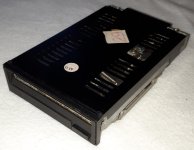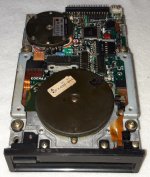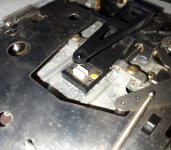Chr$
Experienced Member
This may not belong here as I don't think IBM compatibles ever supported them - too early (or simply not considered), even for the original PC? But I hope to clear up the origin.
I have encountered 2x single-head, what appear to be 67.5TPI 250kb floppy drives. The earliest (show below) is a Chinon F-351 with chip dates from 1983 (latest) and the other is a Panasonic JU-312 with a label entirely in Japanese and chip dates 1984 (latest).
Fascinating, really odd just seeing one lower head in them. The size is non standard too, compared to 'normal' 720k and 1.44mb drives.
But in which systems were these types of drives used? Were they ever used or were they superseded before they were even mounted in any kind of computer?! And is there any way I can test one using an XT or a choice of later IBM compatibles.
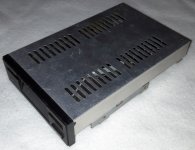
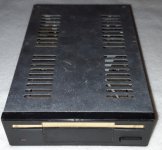

I have encountered 2x single-head, what appear to be 67.5TPI 250kb floppy drives. The earliest (show below) is a Chinon F-351 with chip dates from 1983 (latest) and the other is a Panasonic JU-312 with a label entirely in Japanese and chip dates 1984 (latest).
Fascinating, really odd just seeing one lower head in them. The size is non standard too, compared to 'normal' 720k and 1.44mb drives.
But in which systems were these types of drives used? Were they ever used or were they superseded before they were even mounted in any kind of computer?! And is there any way I can test one using an XT or a choice of later IBM compatibles.





